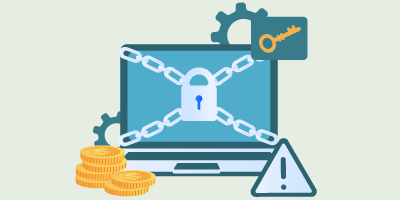An incident response plan is an integral component of any information security program. In the event of a cyberattack, this plan guides a business’ security team through the process of detecting and mitigating threats. Since incident response plans are key to cyber resilience, they should be validated through tabletop exercises.
Incident response tabletop exercises allow businesses to evaluate the efficacy of their plans and employee preparedness. By conducting regular incident response tabletop exercises, businesses can test and validate their plans to fill any gaps as well as ensure employees are aware of their roles in the event of a security breach.
In this blog post, we provide a comprehensive guide to incident response tabletop exercises, including goals and benefits.
What is an incident response tabletop exercise?
An incident response tabletop exercise is designed to evaluate the adequacy of a company’s incident response plan and simulate incident response in a non-threatening group setting. During the session, the facilitator initiates an open discussion to review key elements of the company’s plan with assigned staff and management.
Next, the group engages in a walkthrough exercise, during which they must respond to a simulated cyber incident scenario, such as phishing or ransomware. Using the company’s incident response plan as a roadmap, participants are encouraged to talk through next steps and provide strategies to contain and recover from a cyberattack.
Who should be involved in an incident response tabletop exercise?
Choosing the right participants is key to the success of the incident response tabletop exercise. Every employee responsible for enforcing the incident response plan and making decisions should be involved in the session. This can include the incident response team, IT team, department managers, and C-suite executives, among others.
By holding incident response tabletop exercises with relevant staff and stakeholders, businesses can plug any knowledge gaps to enhance communication and decision-making in the event of an actual attack.
What are the goals of an incident response tabletop exercise?
Incident response tabletop exercises are conducted with the overall goal of eliminating any gaps in an organization’s response strategy before they become weak links during an actual attack.
The two primary goals of the incident response tabletop exercise are:
Identify shortcomings in the company’s incident response plan and develop remediation strategies.
Ensure staff are familiar with the contents of the incident response plan as well as their assigned roles and responsibilities during a breach.
What are the benefits of incident response tabletop exercises?
Incident response tabletop exercises help improve a company’s overall cybersecurity response preparedness and support business continuity in the event of a security incident. Here are some key benefits of these tabletop sessions.
Review and validate company incident response plan
An incident response tabletop exercise is a cost-effective and proactive strategy to validate a company’s response plan. By simulating cyber incidents and facilitating discussions, these tabletop exercises put the organization’s incident response plan to the test and evaluate how employees think, react, and communicate during an attack. Through these tabletop exercises, businesses can evaluate how well their plan works and identify areas for improvement.
Gain employee feedback to enhance incident response plan
Through discussion-based group sessions, tabletop exercises create an engaging, non-threatening environment for employees to review, test, and provide suggestions to enhance your business’ incident response strategy.
Improve employee understanding of assigned roles and responsibilities
Incident response tabletop sessions help employees get comfortable with their assigned roles and responsibilities in the event of a cyberattack. The walkthrough incident exercises allow employees to practice their roles and develop more confidence in their understanding of the company’s response plan. This way, they are prepared to implement the incident response strategy under pressure during an actual security breach.
Increase organizational cyber resilience and awareness
Incident response tabletop exercises help improve overall cyber resilience by promoting employee awareness of security threats and the efforts necessary to keep business operations running during a breach. The sessions also help reinforce the importance of communication and teamwork across the organization to minimize the damage of an attack.
Why should businesses hire an external facilitator for the tabletop exercise?
Businesses should hire a qualified cybersecurity professional as an external facilitator for their incident response tabletop exercise. An external facilitator can provide an objective review of the organization’s incident response plan and preparedness. Leverage the facilitator’s cybersecurity knowledge and tabletop expertise to conduct a structured and engaging session that delivers the hands-on employee training necessary to improve overall preparedness.
Looking to perform an Incident Tabletop Exercise?
GraVoc’s incident response tabletop exercise provides employees with hands-on training for responding to cybersecurity threats and events. Click below to learn more about our Incident Tabletop Exercise services and security awareness training!
Related articles
Change Healthcare Attack: Ransomware Protection Measures for Healthcare Organizations
In light of the Change Healthcare attack, we explore why hackers target healthcare and how healthcare can defend against ransomware.
GraVoc Recognized on CRN MSP 500 List for Second Year in a Row
For the second year in a row, GraVoc has been recognized on the CRN® MSP 500 list in the Pioneer 250 category!
PCI SAQ Types: Which SAQ is Right for Your Business?
In this blog post, we provide an overview of the SAQ types for PCI DSS v4.0 and how to select a PCI SAQ that’s right for your business.




